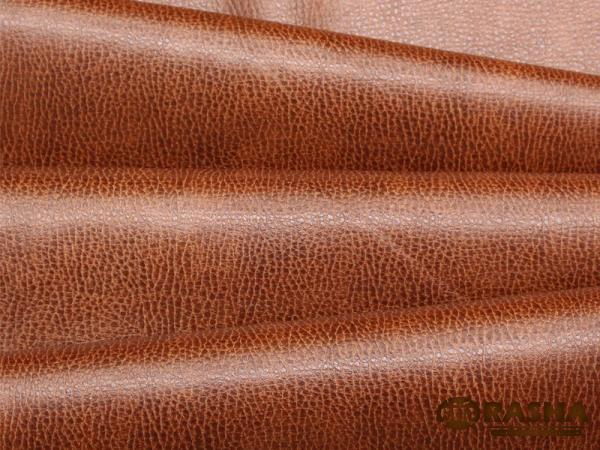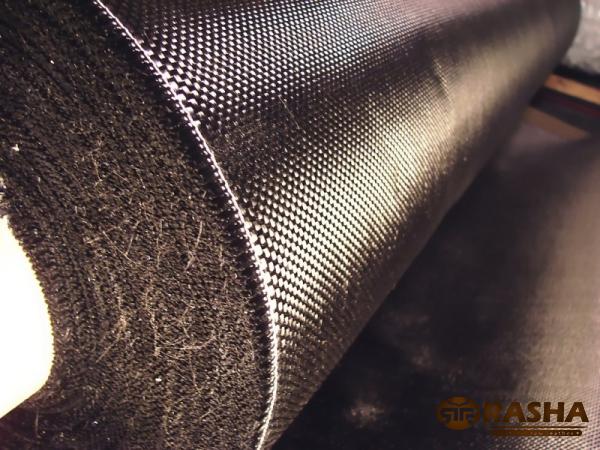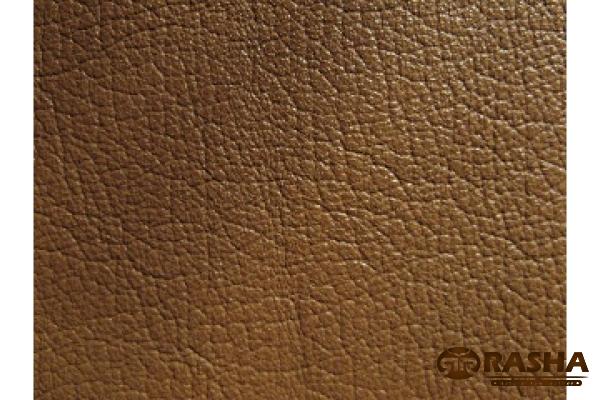Leather has been a highly sought-after material for centuries, valued for its durability, versatility, and timeless appeal. Among the various types of leather available, real leather stands out as the benchmark for quality and luxury. This article aims to provide a comprehensive overview of real leather material for sale, exploring its characteristics, types, production process, care instructions, and ethical considerations. I. Characteristics of Real Leather Material: Real leather boasts several distinct characteristics that set it apart from other materials. These include: 1. Durability: Real leather is renowned for its strength and resistance to wear and tear, making it a long-lasting investment. 2. Breathability: Leather is a natural material that allows air to pass through, ensuring comfort by reducing heat and moisture buildup. 3. Texture and Appearance: Real leather showcases natural variations, such as wrinkles, grain patterns, and scars, enhancing its charm and uniqueness. 4. Softness and Flexibility: Over time, real leather tends to soften and develop a supple feel, offering superior comfort and adaptability. II. Types of Genuine Leather: 1. Full-grain Leather: Considered the highest quality, full-grain leather retains the grain layer, providing maximum durability and a natural appearance. 2. Top-grain Leather: This grade of leather is sanded and buffed to remove imperfections, resulting in a smooth surface. It is slightly less durable than full-grain but remains a popular choice for its balance of quality and affordability. 3. Split Leather: Created using the lower layers of the hide, split leather is less durable than full or top-grain leather. It is often used in the production of suede. 4. Nubuck Leather: Made from the outer part of the hide, nubuck leather is sanded to produce a velvety texture, similar to suede. It offers a luxurious feel but requires careful maintenance. 5. Corrected-grain Leather: This type of leather is buffed and embossed to remove imperfections and create an even surface. It is lower quality compared to full-grain or top-grain leather. III. Leather Production Process: 1. Raw Material Selection: The first step in leather production involves selecting high-quality hides sourced from animals like cows, goats, or sheep. 2. Preparing the Hides: The hides undergo a series of processes, including cleaning, soaking, and removing hair and flesh. They are then split into layers of varying thickness. 3. Tanning: The tanning process determines the type of leather produced. Common methods include vegetable tanning, chrome tanning, and synthetic tanning. Tanning converts raw hides into a durable, non-perishable material. 4. Finishing: After tanning, the leather is dyed, treated, and sometimes buffed or embossed to enhance its appearance. This stage ensures that the final product is attractive and ready for sale.

leather
 IV. Caring for Real Leather: Proper care of real leather is essential to maintain its longevity and appearance. Here are some useful guidelines: 1. Regular Cleaning: Remove dust and dirt with a soft, dry cloth. For stains, use a mild soap or leather cleaner, applying it gently with a clean cloth. 2. Avoiding Water Damage: Real leather should be kept away from excessive moisture, as it can lead to discoloration, staining, and warping. If exposed to water, gently pat dry and allow it to air dry naturally. 3. Conditioning and Moisturizing: Use leather conditioners to restore moisture, prevent drying, and maintain its suppleness. Apply the conditioner with a soft cloth, following the product instructions. 4. Storage: When not in use, store leather items in a cool, dry place to prevent damage from heat, humidity, and direct sunlight. Use breathable covers to protect them from dust and scratches. V. Ethical Considerations and Sustainability: Leather production raises ethical questions that conscientious consumers should be aware of. Here are a few aspects to consider: 1. Animal Welfare: Choosing leather from ethically raised and responsibly farmed animals ensures that animal welfare standards are upheld. 2. Environmental Impact: Leather production can have environmental implications, such as deforestation for grazing land and the use of harmful chemicals in the tanning process. Opting for sustainable and eco-friendly leather helps minimize these effects. 3. Alternative Options: Individuals concerned about animal welfare and environmental impacts can explore alternative materials, such as vegan leather or recycled leather, which offer similar aesthetics without the use of animal products. Conclusion: Real leather remains a highly coveted material for its undeniable quality, durability, and timeless appeal. Understanding its characteristics, types, production process, care instructions, and ethical considerations empowers consumers to make informed choices when purchasing leather products. By appreciating the craftsmanship behind real leather and adopting responsible consumption habits, individuals can continue to enjoy this remarkable material for generations to come. Understanding Real Leather Material for Sale: A Comprehensive Overview I. Exploring the Benefits of Real Leather: Real leather offers a range of benefits that make it an attractive choice for a variety of products, from fashion accessories to furniture. These benefits are factors that businesses can highlight when marketing and selling real leather materials: 1. Luxury and Elegance: Real leather exudes a sense of luxury and elegance that is difficult to replicate with synthetic materials. Its timeless appeal adds a touch of sophistication to any product.
IV. Caring for Real Leather: Proper care of real leather is essential to maintain its longevity and appearance. Here are some useful guidelines: 1. Regular Cleaning: Remove dust and dirt with a soft, dry cloth. For stains, use a mild soap or leather cleaner, applying it gently with a clean cloth. 2. Avoiding Water Damage: Real leather should be kept away from excessive moisture, as it can lead to discoloration, staining, and warping. If exposed to water, gently pat dry and allow it to air dry naturally. 3. Conditioning and Moisturizing: Use leather conditioners to restore moisture, prevent drying, and maintain its suppleness. Apply the conditioner with a soft cloth, following the product instructions. 4. Storage: When not in use, store leather items in a cool, dry place to prevent damage from heat, humidity, and direct sunlight. Use breathable covers to protect them from dust and scratches. V. Ethical Considerations and Sustainability: Leather production raises ethical questions that conscientious consumers should be aware of. Here are a few aspects to consider: 1. Animal Welfare: Choosing leather from ethically raised and responsibly farmed animals ensures that animal welfare standards are upheld. 2. Environmental Impact: Leather production can have environmental implications, such as deforestation for grazing land and the use of harmful chemicals in the tanning process. Opting for sustainable and eco-friendly leather helps minimize these effects. 3. Alternative Options: Individuals concerned about animal welfare and environmental impacts can explore alternative materials, such as vegan leather or recycled leather, which offer similar aesthetics without the use of animal products. Conclusion: Real leather remains a highly coveted material for its undeniable quality, durability, and timeless appeal. Understanding its characteristics, types, production process, care instructions, and ethical considerations empowers consumers to make informed choices when purchasing leather products. By appreciating the craftsmanship behind real leather and adopting responsible consumption habits, individuals can continue to enjoy this remarkable material for generations to come. Understanding Real Leather Material for Sale: A Comprehensive Overview I. Exploring the Benefits of Real Leather: Real leather offers a range of benefits that make it an attractive choice for a variety of products, from fashion accessories to furniture. These benefits are factors that businesses can highlight when marketing and selling real leather materials: 1. Luxury and Elegance: Real leather exudes a sense of luxury and elegance that is difficult to replicate with synthetic materials. Its timeless appeal adds a touch of sophistication to any product.
Specifications of leather
 2. Versatility: Real leather can be used to create a wide range of products, including garments, footwear, bags, belts, wallets, watch straps, upholstery, and home decor items. Its versatility makes it a popular choice in various industries. 3. Durability and Longevity: The inherent strength and resistance to wear and tear of real leather ensures that products made from this material can withstand daily use and last for years, if not decades. This durability adds value and reduces the need for frequent replacement, making it a cost-effective investment in the long run. 4. Natural and Sustainable: Real leather is a natural material sourced from animals. Choosing leather from ethically raised and responsibly farmed animals ensures alignment with sustainability practices and reinforces the preference for natural materials over synthetic alternatives. II. Applications of Real Leather Material: Real leather finds extensive application across various industries. Below are some key areas where businesses make use of real leather materials: 1. Fashion and Apparel: Real leather is highly prized in the fashion industry, with designers and brands incorporating it into clothing, accessories, and footwear. Leather jackets, handbags, shoes, and belts are popular items that consumers often seek. 2. Automotive Industry: Real leather is a desirable option for vehicle interiors, providing a luxurious and comfortable feel. The automotive industry commonly uses leather for car seats, steering wheels, gear shifts, and interior detailing. 3. Furniture and Upholstery: Real leather adds a touch of sophistication to furniture, bringing both style and durability to sofas, armchairs, ottomans, and office furniture. The natural grain and texture of leather enhance the aesthetics of any space. 4. Luggage and Travel Accessories: Real leather is a preferred material for travel bags, briefcases, duffel bags, and backpacks due to its durability and ability to withstand constant handling and transport. 5. Sports Equipment: Leather is commonly used in the production of sports equipment, such as footballs, gloves, saddles, and golf grips, for its resilience, grip, and ability to withstand repetitive use. III. Marketing Strategies for Real Leather Businesses: To effectively sell real leather materials, businesses need to employ targeted marketing strategies. Here are a few key approaches to consider: 1. Storytelling and Branding: Communicating the craftsmanship, tradition, and heritage associated with real leather can create an emotional connection with customers. Highlighting the journey from raw material to finished product can enhance the perceived value of the leather. 2. Quality Assurance and Certifications: Emphasize the quality of your real leather products by obtaining certifications from recognized organizations that validate the authenticity and ethical sourcing of your materials. 3. Customization and Personalization: Offering customization options, such as embossing initials or monograms, allows customers to personalize their leather products, making them unique and tailored to their preferences.
2. Versatility: Real leather can be used to create a wide range of products, including garments, footwear, bags, belts, wallets, watch straps, upholstery, and home decor items. Its versatility makes it a popular choice in various industries. 3. Durability and Longevity: The inherent strength and resistance to wear and tear of real leather ensures that products made from this material can withstand daily use and last for years, if not decades. This durability adds value and reduces the need for frequent replacement, making it a cost-effective investment in the long run. 4. Natural and Sustainable: Real leather is a natural material sourced from animals. Choosing leather from ethically raised and responsibly farmed animals ensures alignment with sustainability practices and reinforces the preference for natural materials over synthetic alternatives. II. Applications of Real Leather Material: Real leather finds extensive application across various industries. Below are some key areas where businesses make use of real leather materials: 1. Fashion and Apparel: Real leather is highly prized in the fashion industry, with designers and brands incorporating it into clothing, accessories, and footwear. Leather jackets, handbags, shoes, and belts are popular items that consumers often seek. 2. Automotive Industry: Real leather is a desirable option for vehicle interiors, providing a luxurious and comfortable feel. The automotive industry commonly uses leather for car seats, steering wheels, gear shifts, and interior detailing. 3. Furniture and Upholstery: Real leather adds a touch of sophistication to furniture, bringing both style and durability to sofas, armchairs, ottomans, and office furniture. The natural grain and texture of leather enhance the aesthetics of any space. 4. Luggage and Travel Accessories: Real leather is a preferred material for travel bags, briefcases, duffel bags, and backpacks due to its durability and ability to withstand constant handling and transport. 5. Sports Equipment: Leather is commonly used in the production of sports equipment, such as footballs, gloves, saddles, and golf grips, for its resilience, grip, and ability to withstand repetitive use. III. Marketing Strategies for Real Leather Businesses: To effectively sell real leather materials, businesses need to employ targeted marketing strategies. Here are a few key approaches to consider: 1. Storytelling and Branding: Communicating the craftsmanship, tradition, and heritage associated with real leather can create an emotional connection with customers. Highlighting the journey from raw material to finished product can enhance the perceived value of the leather. 2. Quality Assurance and Certifications: Emphasize the quality of your real leather products by obtaining certifications from recognized organizations that validate the authenticity and ethical sourcing of your materials. 3. Customization and Personalization: Offering customization options, such as embossing initials or monograms, allows customers to personalize their leather products, making them unique and tailored to their preferences.
buy leather
 4. Collaborations and Limited Editions: Partnering with designers, artists, or influencers for limited edition collections can create exclusivity and generate excitement among consumers, driving demand for your real leather products. 5. Omni-Channel Approach: Establish a strong online presence through e-commerce platforms and social media to reach a wider customer base. Additionally, consider physical retail spaces and collaborations with other businesses to showcase your real leather materials. IV. Addressing Ethical Concerns: With increasing awareness of animal welfare and environmental concerns, businesses in the real leather industry need to address these issues proactively. Here are some approaches to address ethical concerns: 1. Ethical Sourcing: Practice responsible sourcing by partnering with suppliers who adhere to ethical standards and ensure the well-being of animals throughout their lives. 2. Transparency and Traceability: Provide customers with transparent information about the source of your leather materials and the production process, allowing them to make informed decisions about their purchases. 3. Sustainable Tanning: Opt for tanning methods that minimize the use of harmful chemicals and reduce environmental impact. Vegetable tanning, for example, is a more eco-friendly alternative to chrome tanning. 4. Recycling and Waste Reduction: Implement recycling programs and explore ways to reduce waste generated during the production process. Recycling leather scraps and transforming them into new products or accessories can be an effective solution. V. Customer Education and After-Sales Service: Educating customers about the care, maintenance, and longevity of real leather products is essential for customer satisfaction and repeat business. Offer after-sales support and guidance, including care instructions and recommendations for leather cleaners and conditioners. Providing resources such as online tutorials or care guides can help customers keep their leather items in optimal condition. Conclusion: Real leather is a highly sought-after material valued for its durability, versatility, and timeless appeal. Understanding the benefits, applications, marketing strategies, and ethical considerations associated with real leather is crucial for businesses operating in this industry. By emphasizing the distinctive qualities of real leather, addressing ethical concerns, and providing excellent customer service, businesses can thrive in the market and meet the demands of discerning customers seeking high-quality products.
4. Collaborations and Limited Editions: Partnering with designers, artists, or influencers for limited edition collections can create exclusivity and generate excitement among consumers, driving demand for your real leather products. 5. Omni-Channel Approach: Establish a strong online presence through e-commerce platforms and social media to reach a wider customer base. Additionally, consider physical retail spaces and collaborations with other businesses to showcase your real leather materials. IV. Addressing Ethical Concerns: With increasing awareness of animal welfare and environmental concerns, businesses in the real leather industry need to address these issues proactively. Here are some approaches to address ethical concerns: 1. Ethical Sourcing: Practice responsible sourcing by partnering with suppliers who adhere to ethical standards and ensure the well-being of animals throughout their lives. 2. Transparency and Traceability: Provide customers with transparent information about the source of your leather materials and the production process, allowing them to make informed decisions about their purchases. 3. Sustainable Tanning: Opt for tanning methods that minimize the use of harmful chemicals and reduce environmental impact. Vegetable tanning, for example, is a more eco-friendly alternative to chrome tanning. 4. Recycling and Waste Reduction: Implement recycling programs and explore ways to reduce waste generated during the production process. Recycling leather scraps and transforming them into new products or accessories can be an effective solution. V. Customer Education and After-Sales Service: Educating customers about the care, maintenance, and longevity of real leather products is essential for customer satisfaction and repeat business. Offer after-sales support and guidance, including care instructions and recommendations for leather cleaners and conditioners. Providing resources such as online tutorials or care guides can help customers keep their leather items in optimal condition. Conclusion: Real leather is a highly sought-after material valued for its durability, versatility, and timeless appeal. Understanding the benefits, applications, marketing strategies, and ethical considerations associated with real leather is crucial for businesses operating in this industry. By emphasizing the distinctive qualities of real leather, addressing ethical concerns, and providing excellent customer service, businesses can thrive in the market and meet the demands of discerning customers seeking high-quality products.










Your comment submitted.